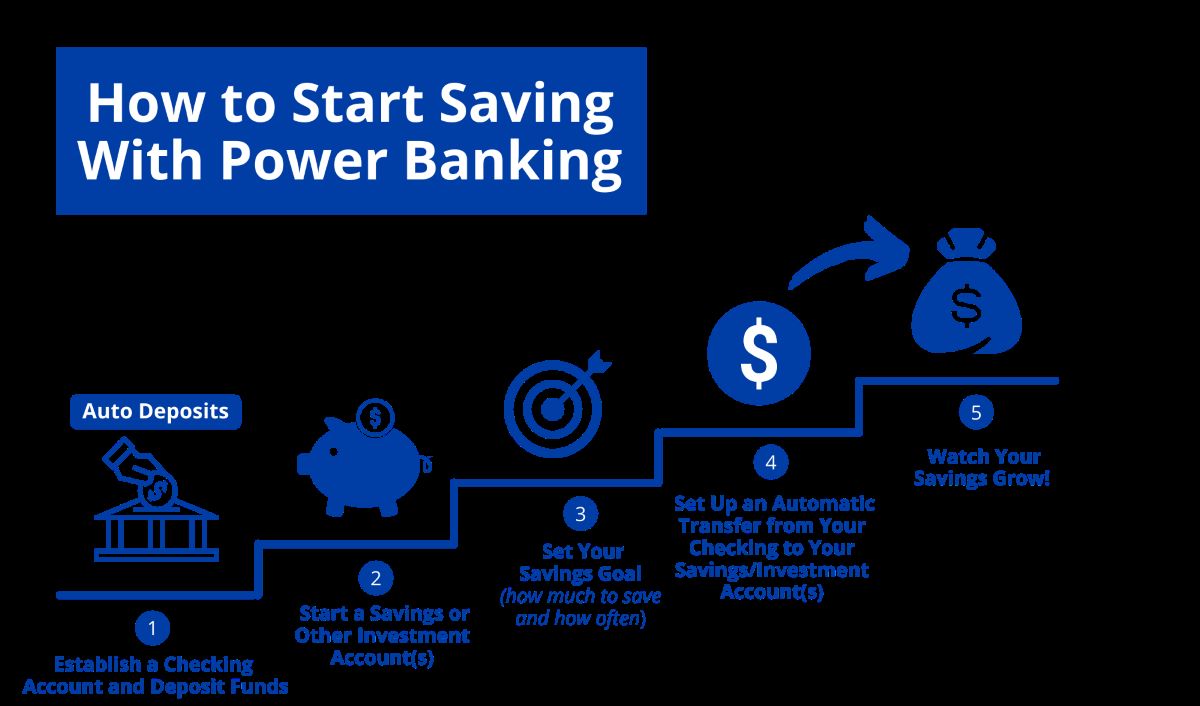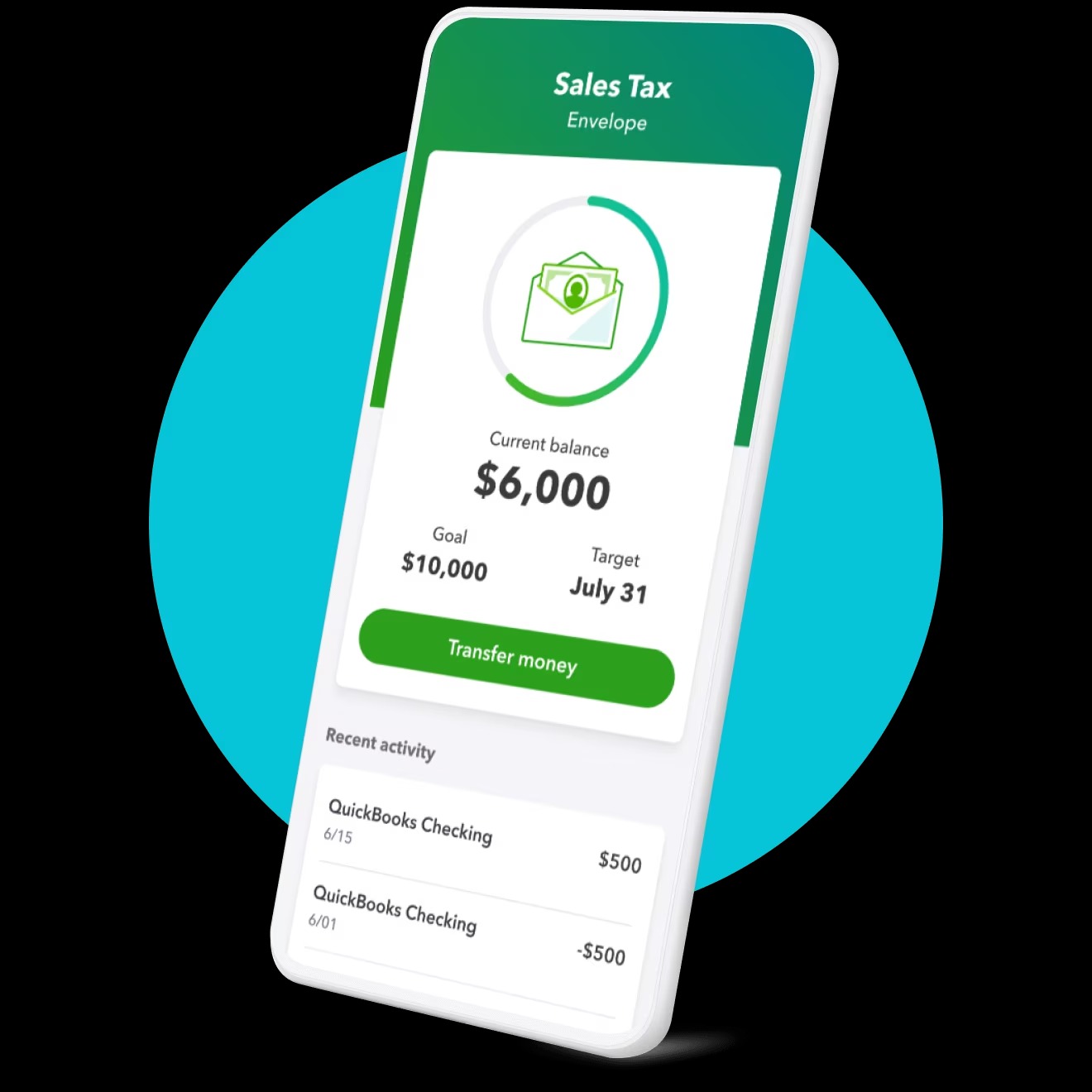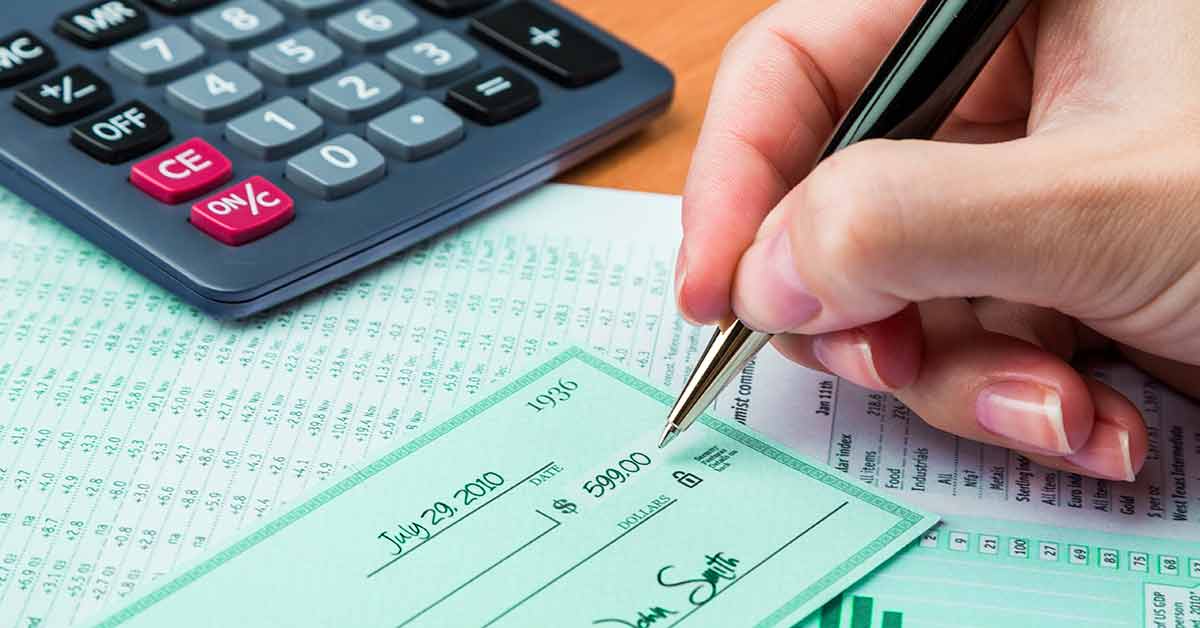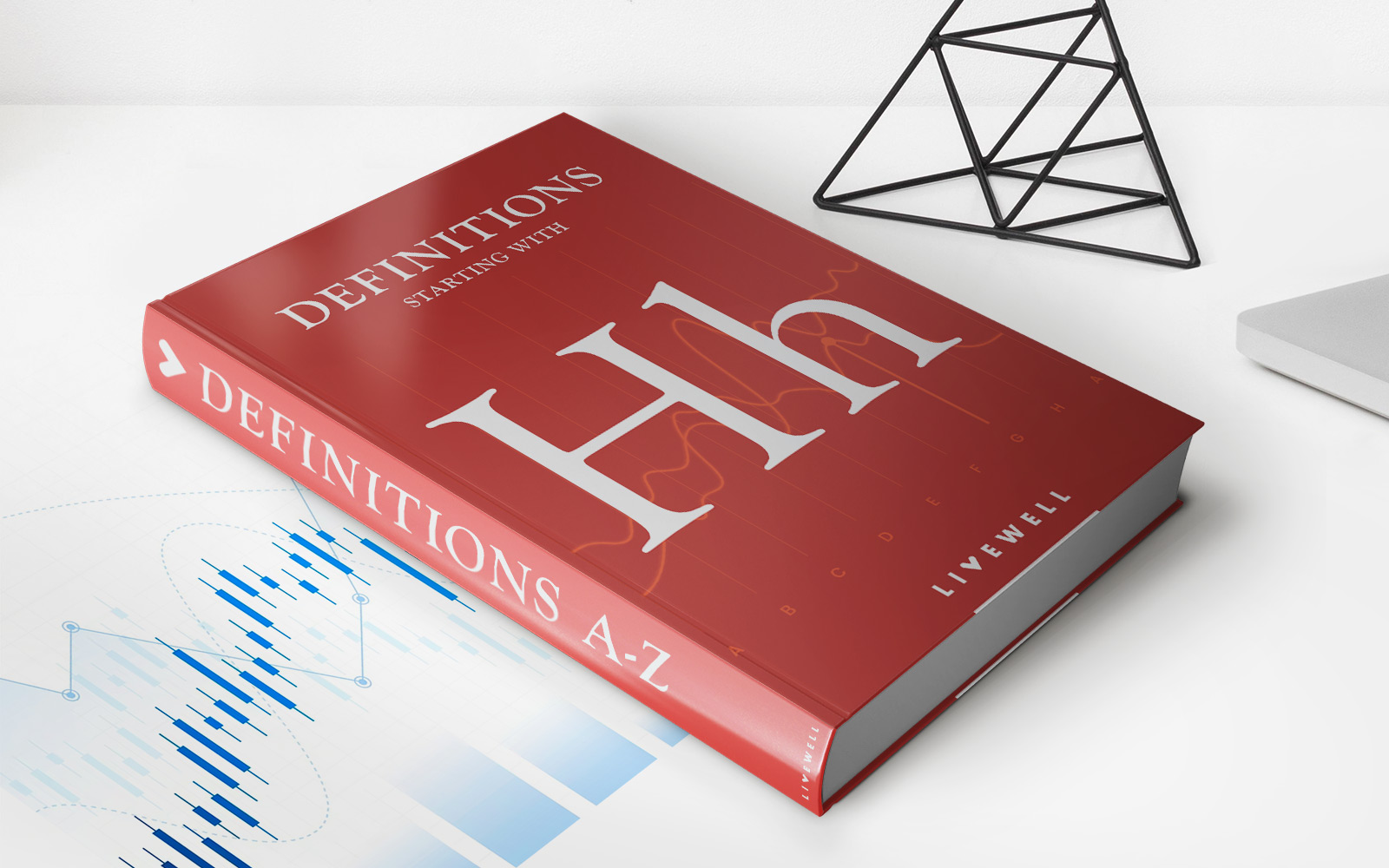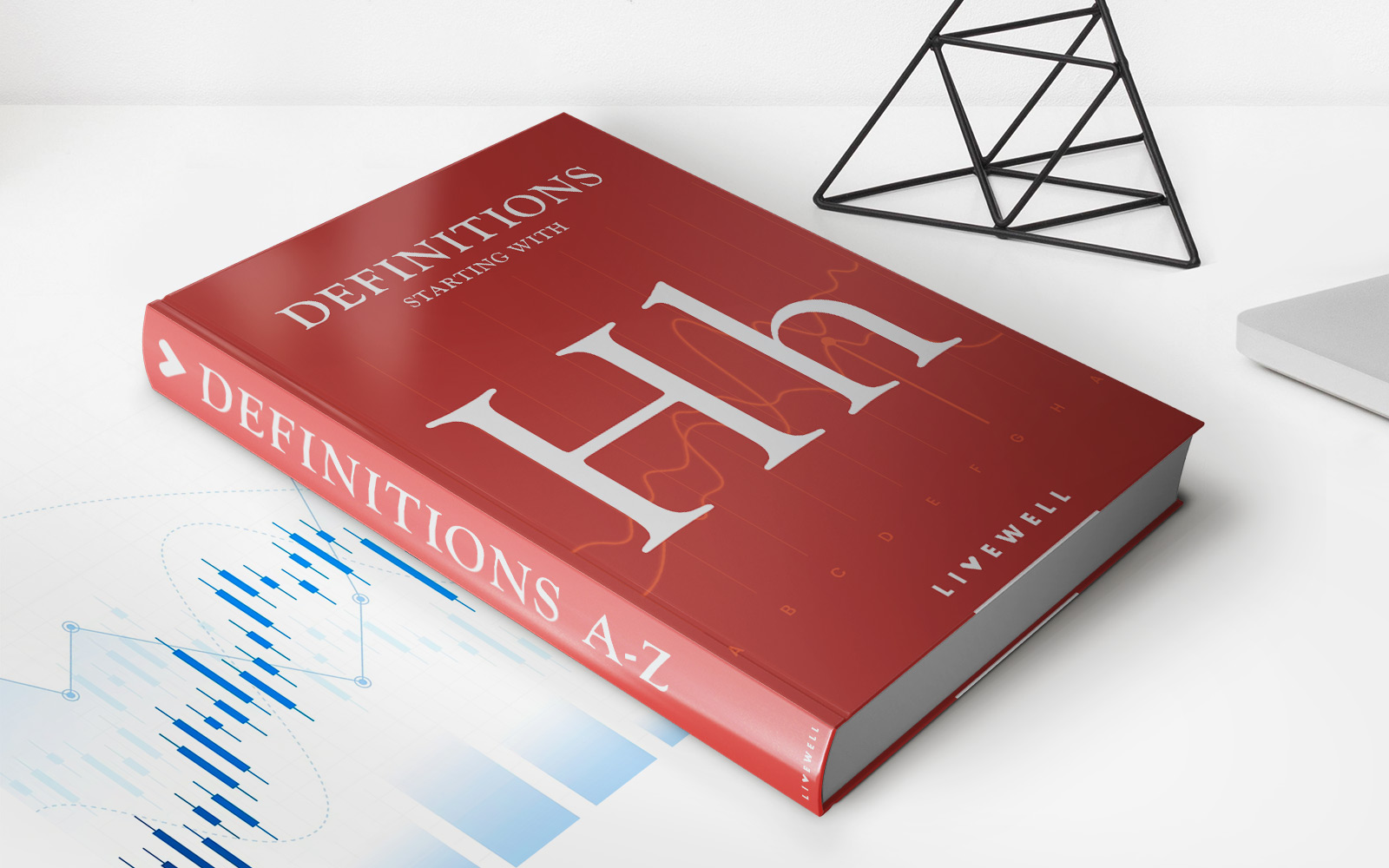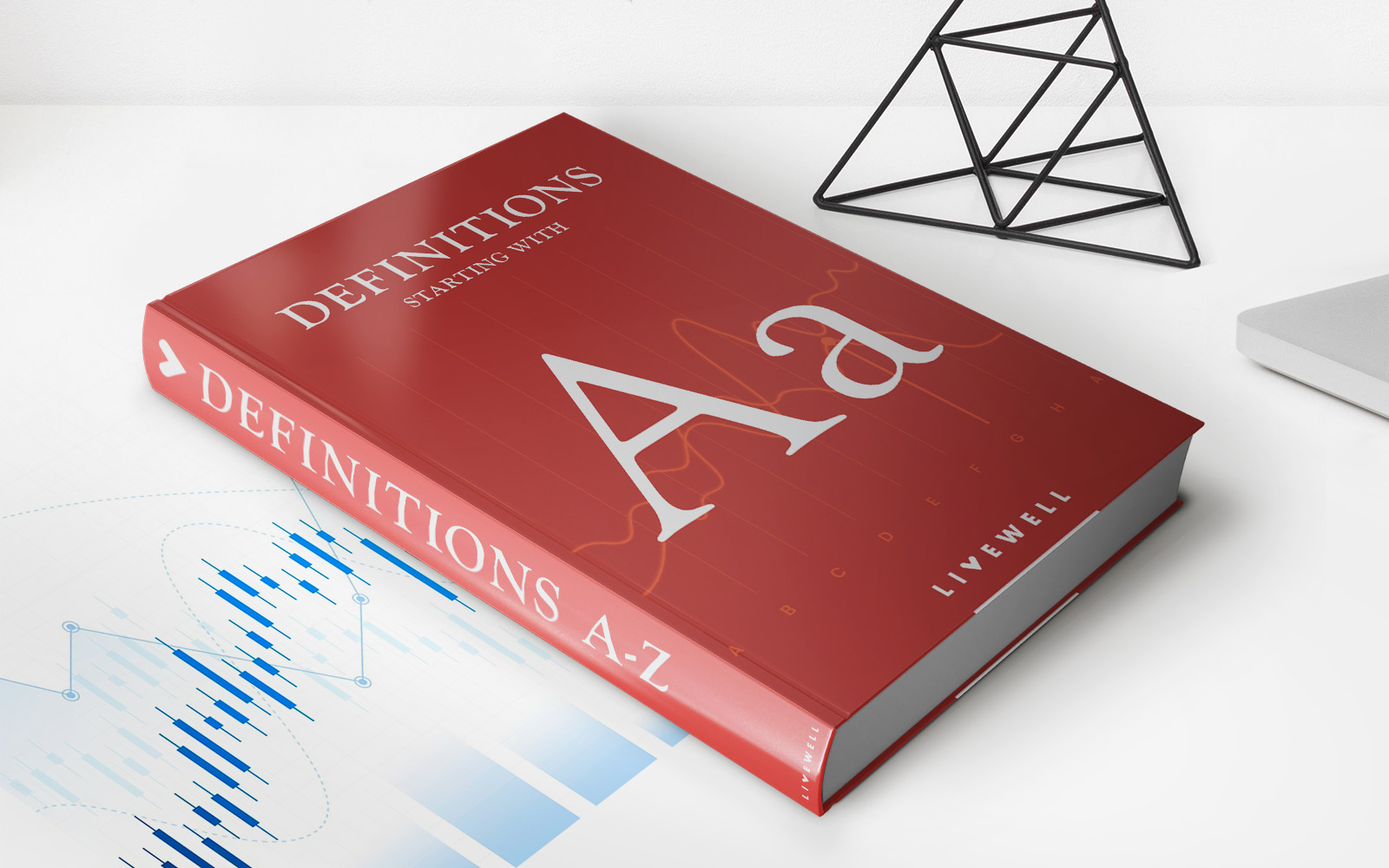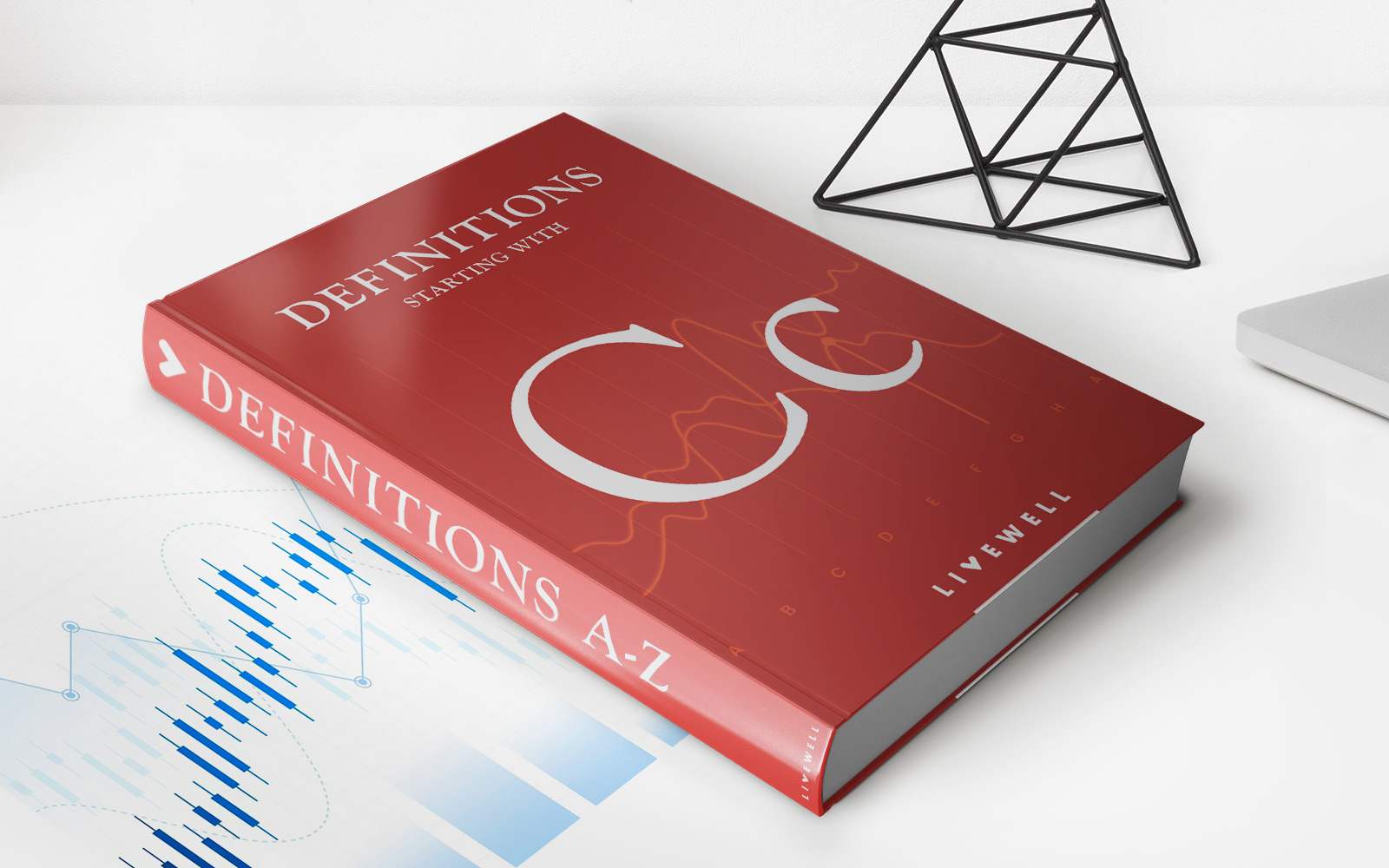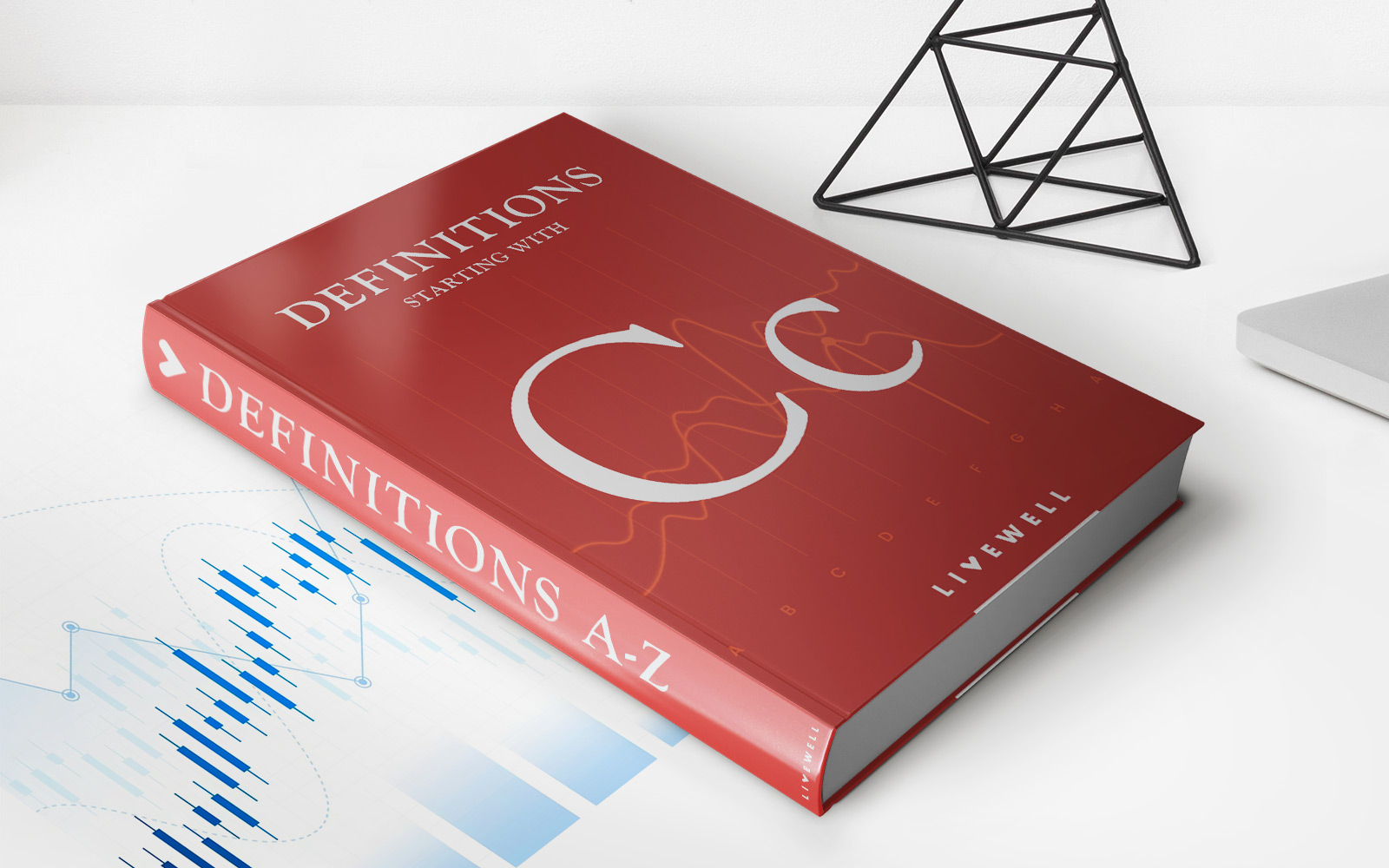

Finance
What Is High Yield Checking Account
Published: October 28, 2023
Discover the benefits of high yield checking accounts and how they can help you manage your finances more effectively. Open an account today for higher interest rates and added convenience.
(Many of the links in this article redirect to a specific reviewed product. Your purchase of these products through affiliate links helps to generate commission for LiveWell, at no extra cost. Learn more)
Table of Contents
- Introduction
- Definition of a High Yield Checking Account
- Benefits of High Yield Checking Accounts
- Features and Requirements of High Yield Checking Accounts
- How to Open a High Yield Checking Account
- Factors to Consider Before Choosing a High Yield Checking Account
- Comparison of High Yield Checking Accounts Offered by Different Banks
- Tips for Maximizing the Benefits of a High Yield Checking Account
- Potential Drawbacks of High Yield Checking Accounts
- Conclusion
Introduction
Welcome to the world of high yield checking accounts! If you’re looking for a way to make your money work harder for you, then you’ve come to the right place. In this article, we’ll explore the ins and outs of high yield checking accounts, including what they are, their benefits, and how to choose the right one for your financial goals.
Traditional checking accounts have long been a staple in personal finance, offering a convenient way to manage day-to-day expenses. However, they often come with low or even zero interest rates, which means your hard-earned money isn’t doing much to grow.
This is where high yield checking accounts come into play. These accounts, offered by banks and other financial institutions, offer a higher interest rate compared to traditional checking accounts, allowing you to earn more on your deposited funds. The concept is similar to high yield savings accounts, but with the added convenience of check-writing abilities and debit card access.
High yield checking accounts have gained popularity in recent years, as more people seek value in their everyday banking. Not only do they provide a safe and accessible place to manage your money, but they also offer the potential to earn a competitive return on your balance.
In this article, we’ll dive deeper into what high yield checking accounts are, explore their benefits, and discuss the features and requirements you should be aware of before opening one. We’ll also provide some tips for maximizing the benefits of these accounts and highlight potential drawbacks to consider. By the end, you’ll have the knowledge to make an informed decision and take advantage of the financial opportunities high yield checking accounts have to offer.
Definition of a High Yield Checking Account
A high yield checking account is a type of deposit account offered by banks and credit unions that allows you to earn a higher interest rate on the funds deposited in the account. Unlike traditional checking accounts that typically offer minimal or no interest, high yield checking accounts provide a more competitive rate, giving you the opportunity to grow your money over time.
These accounts are similar to regular checking accounts in terms of functionality. You can use the account for everyday transactions, such as writing checks, making online payments, and using a debit card for purchases. However, the key distinguishing feature is the ability to earn interest on the balance maintained in the account.
The interest rates offered on high yield checking accounts vary among financial institutions and can be influenced by factors such as the current market conditions and the bank’s policies. Generally, the interest rates for high yield checking accounts tend to be higher than those of traditional savings accounts but lower than other investment options like certificates of deposit or money market accounts.
In addition to the interest earnings, high yield checking accounts may offer additional benefits, such as ATM fee reimbursements, unlimited checkwriting privileges, and access to online and mobile banking services, making them a convenient and flexible banking solution.
It’s important to note that high yield checking accounts often come with certain requirements and restrictions. Banks may impose minimum balance requirements, monthly transaction limits, or direct deposit requirements to qualify for the higher interest rate. It’s crucial to review these terms and conditions carefully before opening an account and ensure that you are comfortable meeting the requirements.
In summary, a high yield checking account is a financial product that combines the convenience of a regular checking account with the opportunity to earn a competitive interest rate on your deposited funds. It provides you with the ability to keep your money easily accessible while still allowing it to grow over time.
Benefits of High Yield Checking Accounts
High yield checking accounts offer a range of benefits that make them an attractive option for individuals looking to maximize their financial potential. Here are some key advantages of opening a high yield checking account:
- Higher Interest Rate: The primary benefit of a high yield checking account is the ability to earn a higher interest rate compared to traditional checking accounts. This means that your money has the potential to grow faster over time, helping you reach your financial goals sooner.
- Flexibility and Convenience: High yield checking accounts provide the same level of convenience and flexibility as regular checking accounts. You can use them for everyday transactions, such as writing checks, making debit card purchases, or paying bills online. This allows you to seamlessly manage your finances while still earning interest on your balance.
- No Lock-In Period: Unlike other investment options like certificates of deposit or savings bonds, high yield checking accounts typically don’t have a lock-in period. You have the freedom to access your funds whenever you need them without incurring any penalties, making it a convenient option for your short-term financial needs.
- Additional Account Benefits: Many high yield checking accounts come with extra perks to enhance your banking experience. These may include ATM fee reimbursements, online and mobile banking services, free checks, and even cashback rewards on certain purchases. These additional benefits can save you money and offer added value.
- FDIC Insurance: High yield checking accounts offered by FDIC-insured banks are protected by the Federal Deposit Insurance Corporation (FDIC). This means that even if the bank experiences financial difficulties, your funds are insured up to $250,000 per depositor, providing peace of mind and protecting your hard-earned money.
By taking advantage of a high yield checking account, you can earn more on your deposited funds while enjoying the convenience and flexibility of a traditional checking account. Whether you’re saving for a specific goal, building an emergency fund, or simply looking to make your money work harder, a high yield checking account can be a valuable tool in your financial journey.
Features and Requirements of High Yield Checking Accounts
High yield checking accounts come with a set of features and requirements that are important to understand before opening an account. These features and requirements can vary among different financial institutions, so it’s crucial to review them carefully to ensure that the account meets your needs. Here are some common features and requirements of high yield checking accounts:
- Minimum Balance Requirement: Many high yield checking accounts require you to maintain a minimum balance in the account to qualify for the higher interest rate. This minimum balance requirement can range from a few hundred dollars to several thousand dollars. Falling below this minimum balance may result in the account being converted to a regular checking account with lower interest rates or incur fees.
- Monthly Transaction Limits: Some high yield checking accounts impose monthly transaction limits. This means that you are allowed to make a certain number of transactions per month, such as writing checks, making debit card purchases, or transferring funds. Exceeding these limits may result in fees or a reduction in the interest rate offered.
- Direct Deposit Requirement: To qualify for the higher interest rate, some high yield checking accounts may require you to set up direct deposit. This means that you need to have your regular income or certain minimum amount consistently deposited into the account each month, typically through your employer’s payroll system. This requirement ensures that the account remains active and that you maintain a steady flow of funds into the account.
- Online and Mobile Banking: Most high yield checking accounts provide access to online and mobile banking platforms, allowing you to manage your account conveniently from your computer or smartphone. You can check your balance, view transaction history, transfer funds, and even deposit checks remotely through these secure platforms.
- Fees and Charges: While high yield checking accounts offer higher interest rates, there may still be associated fees and charges to consider. Common fees include monthly account maintenance fees, overdraft fees, and out-of-network ATM fees. Be sure to familiarize yourself with the fee structure and any potential charges before opening an account.
Understanding the features and requirements of a high yield checking account is crucial to make an informed decision. Evaluate your financial situation, including your ability to meet the minimum balance requirements and maintain the necessary transaction volume, before committing to an account. By doing so, you can choose an account that aligns with your financial goals and provides the features you need for seamless banking.
How to Open a High Yield Checking Account
Opening a high yield checking account is a straightforward process that can be completed in a few simple steps. Here’s a guide on how to open a high yield checking account:
- Research Financial Institutions: Start by researching different banks and credit unions that offer high yield checking accounts. Look for institutions that have a reputable track record, favorable interest rates, and account features that align with your needs.
- Review Account Requirements: Carefully review the requirements of the high yield checking accounts you are considering. Take note of the minimum balance requirement, monthly transaction limits, direct deposit requirements, and any associated fees. Make sure you can meet these requirements comfortably.
- Gather Necessary Documents: Before applying for a high yield checking account, gather the necessary documents typically needed for account opening. This may include a valid identification document (such as a driver’s license or passport), proof of address (such as a utility bill or bank statement), and your Social Security number.
- Apply Online or In-person: Most financial institutions offer the convenience of applying for a high yield checking account online. Visit the bank’s website and navigate to the account opening section. Fill out the application form accurately and provide the requested documentation. Alternatively, you can visit a local branch and apply in-person with the assistance of a banking representative.
- Deposit Funds: After your application is approved, you will need to deposit funds into your high yield checking account. This can typically be done through electronic transfer, wire transfer, or by depositing a check directly into the account. Some banks may require an initial minimum deposit to activate the account, so be prepared to provide the necessary funds.
- Set Up Additional Services: Once your account is open and funded, take advantage of any additional services offered, such as online and mobile banking, setting up direct deposit, and ordering checks. These services will enhance your banking experience and provide added convenience.
Remember to carefully read and understand the terms and conditions of the high yield checking account before finalizing the account opening process. Take note of any ongoing requirements or restrictions to ensure you can maintain the account to maximize its benefits.
By following these steps, you can open a high yield checking account and start utilizing its features to make your money work harder for you.
Factors to Consider Before Choosing a High Yield Checking Account
Before selecting a high yield checking account, it’s important to consider various factors to ensure that the account aligns with your financial goals and needs. Here are some key factors to evaluate before making a decision:
- Interest Rate: Compare the interest rates offered by different banks for their high yield checking accounts. Look for competitive rates that provide a substantial return on your deposited funds. Keep in mind that interest rates may be tiered, meaning they vary based on the account balance, so consider the potential impact on your earnings.
- Minimum Balance Requirement: Assess whether you can comfortably maintain the minimum balance required to qualify for the higher interest rate. If the minimum balance requirement is too high, you may risk incurring fees or having the account downgraded. Choose an account that aligns with your financial capacity and goals.
- Transaction Limits: Check if the high yield checking account has any limits on transactions, such as writing checks or making debit card purchases. Consider your banking habits and ensure that the transaction limits are sufficient for your needs without incurring additional charges.
- Fees and Charges: Review the fee structure associated with the high yield checking account. Assess any monthly maintenance fees, overdraft fees, ATM fees, or any other charges that may be applicable. Look for accounts with low or no fees to minimize costs and maximize your earnings.
- Banking Convenience: Consider the convenience of banking services offered. Look for features like online and mobile banking, bill pay, and remote check deposit. These services can enhance your banking experience and reduce the reliance on physical branch visits.
- Bank Reputation and Customer Service: Research the reputation and customer service of the financial institution offering the high yield checking account. Read customer reviews, check ratings from trusted sources, and evaluate the bank’s customer service quality. It’s important to choose a bank that is reliable and provides excellent support in case of any issues or concerns.
- Additional Account Benefits: Consider any additional perks or benefits offered with the high yield checking account. Some accounts may provide ATM fee reimbursements, cashback rewards, or other rewards programs. Evaluate these benefits and determine if they align with your financial preferences and lifestyle.
By carefully considering these factors, you can choose a high yield checking account that best suits your financial situation. It’s important to strike a balance between maximizing the interest earned and meeting the account requirements comfortably. Take the time to compare different options, review the terms and conditions, and select an account that aligns with your long-term financial goals.
Comparison of High Yield Checking Accounts Offered by Different Banks
When considering a high yield checking account, it’s important to compare offerings from different banks to find the one that best suits your needs. Here are some factors to consider when comparing high yield checking accounts:
- Interest Rates: Compare the interest rates offered by different banks. Look for accounts with higher rates to maximize your earnings. Remember to consider whether the rates are tiered based on the account balance and the potential impact on your earnings.
- Minimum Balance Requirements: Evaluate the minimum balance requirements of each account. Ensure that you can comfortably meet the requirements without incurring fees or downgrading the account. Look for accounts that have reasonable minimum balance requirements that align with your financial goals.
- Fees and Charges: Review the fee structures associated with each high yield checking account. Assess monthly maintenance fees, overdraft fees, ATM fees, and any other charges that may apply. Choose an account with minimal fees or look for accounts that offer fee waivers or reimbursements to minimize costs.
- Transaction Limits: Consider the transaction limits imposed by each account. Evaluate whether the limits are suitable for your banking habits without incurring additional charges. If you anticipate a high volume of transactions, look for accounts with generous limits or accounts that offer unlimited transactions.
- Additional Services: Assess the additional banking services provided by each bank. Look for features like online and mobile banking, bill pay, remote deposit, and ATM access. These services can enhance your banking experience and provide added convenience.
- Banking Policies: Research the banking policies and practices of each financial institution. Consider factors such as customer service quality, reputation, and the bank’s history. Read reviews and ratings from reputable sources to get an idea of the experiences of other customers.
- Account Perks and Benefits: Look for any additional perks or benefits offered with the high yield checking account. Some banks may provide ATM fee reimbursements, cashback rewards, or other rewards programs. Consider these benefits and evaluate their value in relation to your financial preferences and lifestyle.
When comparing high yield checking accounts, it’s essential to consider both the financial aspects and the overall banking experience provided by each institution. Take your time to research and analyze the offerings from different banks, review the terms and conditions, and choose an account that aligns with your financial goals and provides the features and benefits that are most important to you.
Tips for Maximizing the Benefits of a High Yield Checking Account
Once you have chosen a high yield checking account, it’s important to utilize strategies to maximize its benefits. Here are some tips to help you make the most of your high yield checking account:
- Maintain the Minimum Balance: To qualify for the higher interest rate, ensure that you consistently maintain the minimum balance required by the account. Falling below this balance may result in the account being converted to a regular checking account with lower interest rates or incurring fees.
- Stay Within Transaction Limits: Be mindful of any transaction limits associated with the account. Stay within the designated limits to avoid additional charges or a decrease in the interest rate. Plan your transactions accordingly and consider alternative payment methods if needed.
- Take Advantage of Additional Services: Explore and utilize the additional services provided by the high yield checking account. Make use of online and mobile banking capabilities, bill pay features, and remote check deposit. These services can streamline your banking activities and save you time and effort.
- Use ATMs Wisely: If your high yield checking account offers ATM fee reimbursements, make sure to use ATMs within the designated network to avoid incurring unnecessary fees. Plan your withdrawals and check the bank’s ATM locator to find fee-free options in your area.
- Review Your Account Regularly: Regularly review your account activity and statements. Pay close attention to any fees, interest earned, or changes in terms and conditions. Staying informed will help you identify any discrepancies, assess your progress, and make any necessary adjustments to maximize the benefits.
- Consider Direct Deposit: If your high yield checking account requires direct deposit to qualify for the higher interest rate, set up direct deposit with your employer. This not only ensures that you meet the account’s requirements but also provides the convenience of having your paychecks automatically deposited.
- Optimize Your Savings Strategy: A high yield checking account is just one piece of your overall financial picture. Consider combining it with other savings and investment strategies to maximize your returns. Evaluate options like high yield savings accounts, certificates of deposit, or retirement accounts to diversify and grow your savings.
- Monitor Interest Rate Changes: Stay informed about changes in interest rates offered by your bank or other financial institutions. If you notice better rates elsewhere, consider switching to a different high yield checking account that offers a more competitive rate. Be mindful of any account transfer or closure fees before making a decision.
By following these tips, you can effectively maximize the benefits of your high yield checking account. With careful management and strategic use, you can make the most of your deposited funds and experience the financial growth and convenience that these accounts offer.
Potential Drawbacks of High Yield Checking Accounts
While high yield checking accounts offer numerous benefits, it’s important to consider and be aware of potential drawbacks associated with these accounts. Here are some potential drawbacks to keep in mind:
- Minimum Balance Requirements: Many high yield checking accounts require you to maintain a minimum balance to qualify for the higher interest rate. If your account balance falls below this minimum, you may face penalties, such as account downgrades or fees. Evaluate whether you can comfortably meet the minimum balance requirement before opening an account.
- Transaction Limits: Some high yield checking accounts impose transaction limits, such as a maximum number of checks you can write or debit card transactions you can make per month. If you exceed these limits, you may face additional fees or a decrease in the interest rate. Consider your transaction habits and ensure that the limits are suitable for your needs.
- Fees and Charges: Although high yield checking accounts may offer higher interest rates, they can still come with fees and charges. These may include monthly account maintenance fees, overdraft fees, or out-of-network ATM fees. Review the fee structure of the account and consider the potential impact on your earnings.
- Limited ATM Access: Some high yield checking accounts have limited ATM networks, meaning you may have fewer ATM options for fee-free withdrawals. If you frequently rely on ATMs, check if the bank offers reimbursement for out-of-network ATM fees or consider the availability of in-network ATMs in places you frequently visit.
- Lower Rates Compared to Investment Options: While high yield checking accounts offer a higher interest rate compared to traditional checking accounts, the rates may be lower than other investment options like certificates of deposit or money market accounts. If you have a longer-term savings goal, it may be worth considering alternative investment vehicles to potentially earn higher returns.
- Opportunity Cost: By opting for a high yield checking account, you may miss out on other banking benefits or rewards offered by different types of accounts. Consider the opportunity cost of forgoing those benefits, such as cashback rewards, airline miles, or other perks, that could enhance your overall banking experience.
- Interest Rate Fluctuations: Interest rates are subject to change, and the rate offered by your high yield checking account may not remain competitive over time. Keep an eye on fluctuations in interest rates and be prepared to reassess your options if more favorable rates become available elsewhere.
It’s essential to weigh these potential drawbacks against the benefits when deciding whether a high yield checking account is the right choice for you. Evaluate your financial goals, banking habits, and priorities to determine if the advantages outweigh the potential drawbacks for your specific circumstances.
Conclusion
High yield checking accounts offer a compelling opportunity to make your money work harder while retaining the convenience of a traditional checking account. By earning a higher interest rate on your deposited funds, you can see your balance grow over time and potentially reach your financial goals faster.
Throughout this article, we have explored the definition of high yield checking accounts, their benefits, features, and potential drawbacks. We discussed the importance of conducting thorough research, reviewing account requirements, and comparing offerings from different financial institutions to find the right account for your needs.
We also provided tips on how to maximize the benefits of a high yield checking account, such as maintaining the minimum balance, utilizing additional services, and monitoring interest rate changes. By following these suggestions, you can make the most of your account and optimize your financial strategy.
However, it’s important to be aware of potential drawbacks, such as transaction limits, fees, and limited ATM access, which could impact your banking experience. Understanding these drawbacks will help you make an informed decision and consider alternative options if necessary.
Ultimately, the choice to open a high yield checking account depends on your financial goals, banking needs, and individual circumstances. Consider factors such as interest rates, account requirements, availability of additional services, and your ability to meet minimum balance requirements and transaction limits.
Remember, a high yield checking account is just one piece of your overall financial picture. It’s essential to evaluate your complete financial plan and diversify your savings and investments based on your short-term and long-term goals.
In conclusion, a high yield checking account can provide an opportunity to earn a competitive return on your funds while enjoying the convenience of a traditional checking account. By carefully considering the features, requirements, and potential drawbacks, you can make an informed decision that aligns with your financial objectives and helps you make the most of your hard-earned money.
